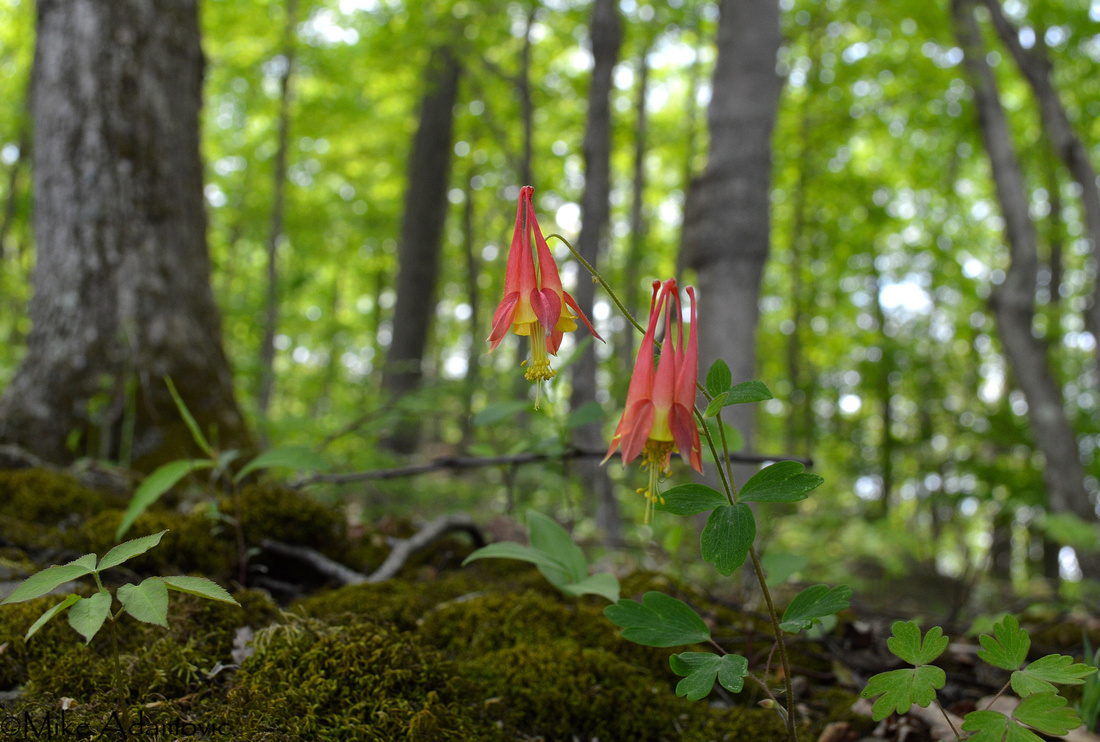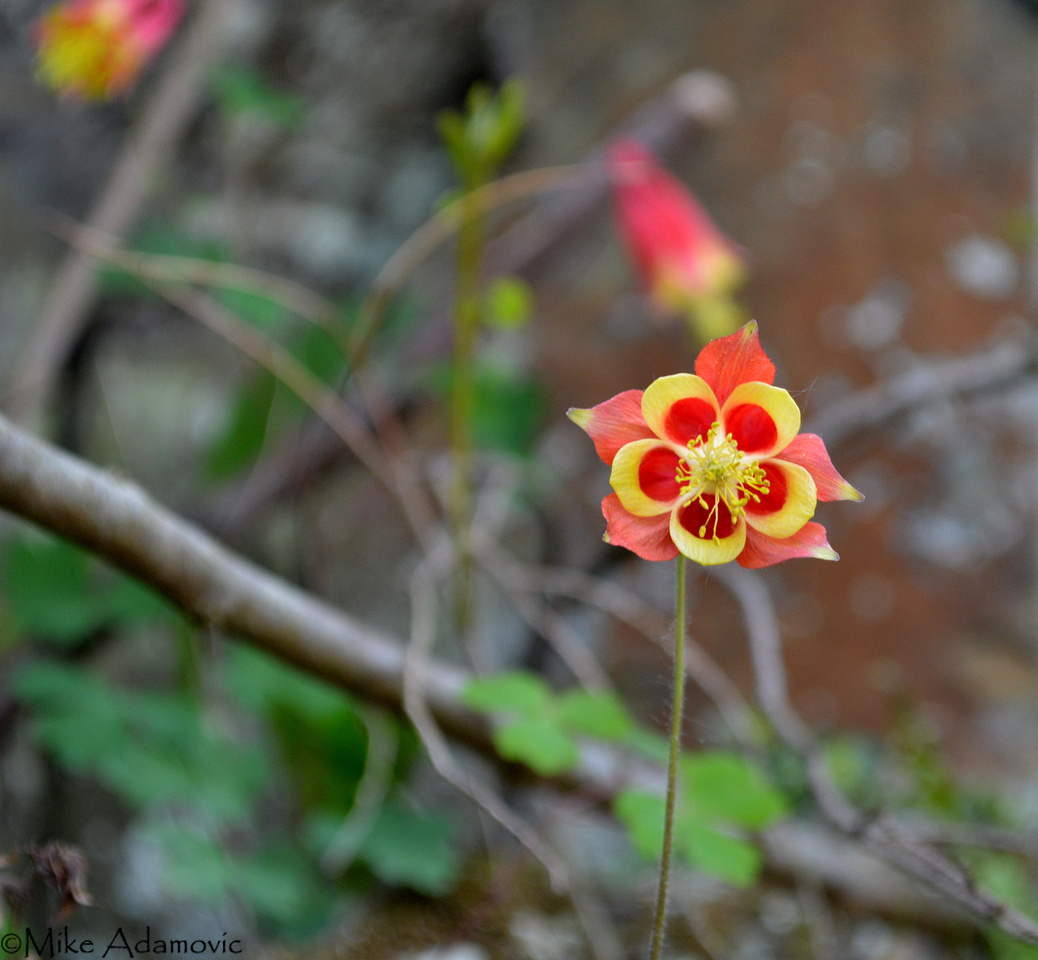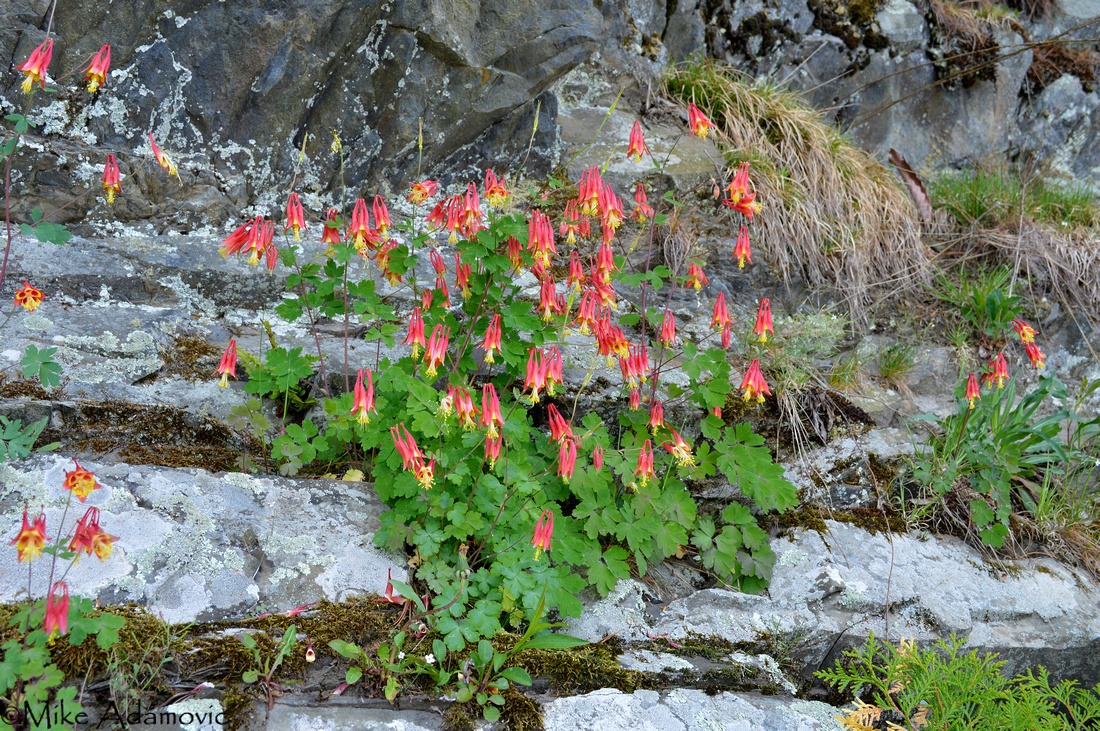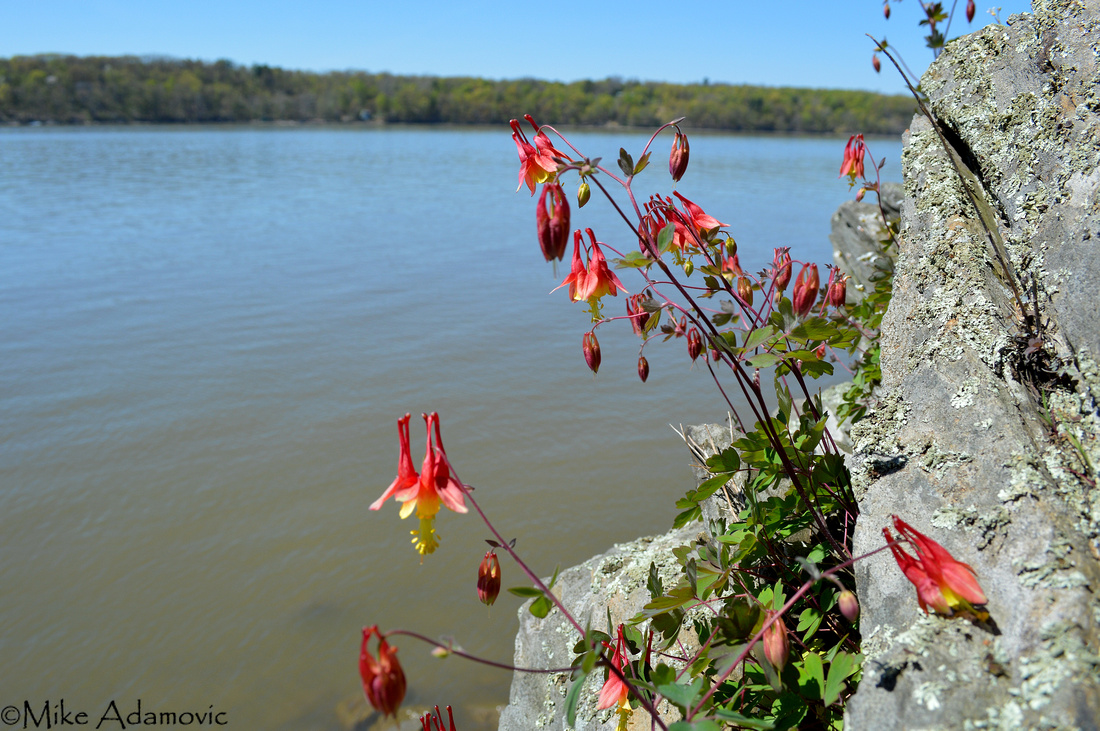Red Columbine (Aquilegia canadensis)


In late spring, shortly after the woods have attained a fresh layering of youthful green and marches toward the mature days of summer, red columbine buds from the understory and makes a striking appearance, adding a dash of crimson to the verdant sea that surrounds. Out of all the spring ephemeral wildflowers, this delicate plant is most likely to capture the attention of a passer-by with its unrivaled beauty and vibrant color scheme. The chandelier-like blossoms, which are mostly red, but sport a rich, golden underside, have been described to possess an “elfin charm” and a splendor which isn’t anything less than “magical and audacious.”
Red columbine is a wide ranging perennial that occupies the eastern half of the United States. Flowers are typically 1.5 inches long with the plants growing 1-2 feet tall. This species has an affinity for slightly alkaline to neutral soil. It’s able to thrive in places most other plants can’t even gain a minor foothold. It’s not uncommon to find a copious profusion of flowers sprouting from a vertical cliff face. The roots are able to penetrate the tiniest of cracks and subsist on the barest amounts of soil. Columbine is also apt to be found gracing spongy beds of moss deep within open and somewhat sunny forests.


Plants begin blossoming in mid-May and continue blooming until latter part of June. Red flowers throughout temperate forests, typical to the eastern U.S., are usually rather scarce and appear to have evolved to attract hummingbirds, in most cases. The long, tubular structures of the columbine flowers attest to this. Nectar is sequestered at the base of each lengthy tube; only creatures with long beaks or tongues are able to reach it. It has been speculated that the yellow underside is a mechanism to guide potential pollinators to the sweet reward. Apart from hummingbirds, bumblebees are probably one of the few other pollinators able to delve all the way inside. Some insects, however, may cheat the system and chew a hole through the flower to rob it of the nectar—in such a case, flowers fail to be pollinated.


Large and dense aggregations of plants are most frequently found situated on rock outcroppings, opposed to those inhabiting woodlands, which often repose in the darker environs individually and are spaced out more regularly. In favorable locations, clusters containing dozens to hundreds of plants are routinely spotted. Flowers, supported on thin and wiry stalks, tremble in the slightest wind. One is likely to envision flames from these more sizeable populations, especially at a distance when individual flowers morph into a wavering mass of red, and dart about in a fashion almost identical to a blazing inferno swept up by an airy gust. The sight resembles a scene from a more sultry and volcanic locale, where flames erupting from bare rock in some remote tropical crater wouldn’t be out of character. But here in the more tempered north, the sight mesmerizes and momentarily transports one to another hemisphere.


It’s not surprising that a flower of such extraordinary beauty also boasts and impressive amount of lore. Native Americans believed the columbine to possess the power to assist in achieving a long lasting love, and appropriately used it to concoct love charms. A man would crush the seeds and rub the powder onto his hands, and by grasping the hand of his intended lover, would ensure the attainment of his pursuit. Europeans on the other hand, believed quite the exact opposite. It was an insult to a woman if she should receive a bouquet of columbines. Such a gift usually symbolized infidelity or the departing of a lover. For men, being given some was just plain bad luck, and a sign that troubles were probably soon to follow, similarly to other equally portentous superstitions, such as breaking a mirror or walking under a ladder.
Despite conflicting lore, columbines are ideal to add to a home garden. The seeds are relatively simple to propagate and plants live up to 5 years. Also, as the leaves are toxic and unsavory to most mammalian herbivores, such as deer and rabbits, no effort has to be undertaken to protect plants from woodland raiders. But, if you do enjoy having the avian variety visit, columbine is one species sure to draw the dainty ruby-throated hummingbirds to your yard. Columbine also goes by the nickname of “wild honeysuckle,” as the nectar reservoirs located at the top of the flowers offer a saccharine treat if imbibed. Be it by taste or by sight, red columbine is likely to leave an indelibly sweet impression on all those who are lucky enough to encounter it.

